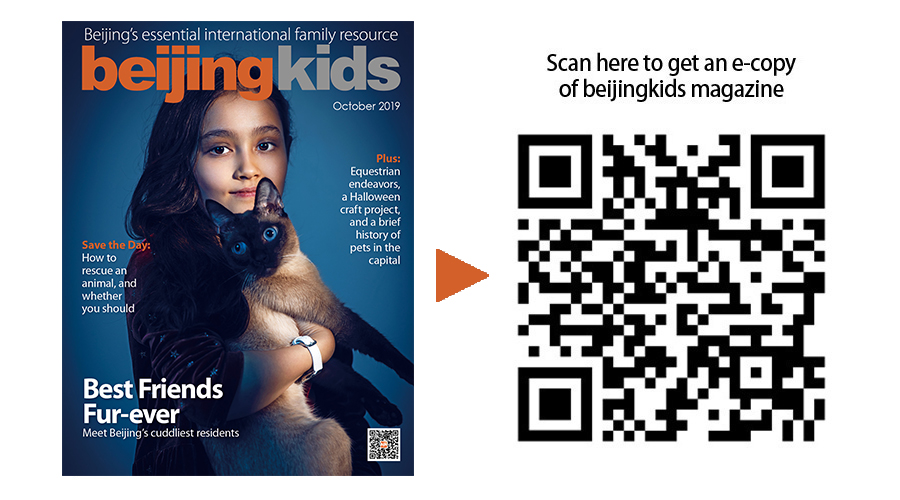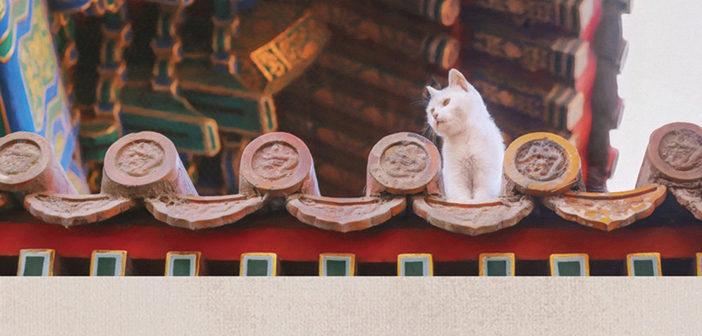A little over four years ago, Kyle Page was going through a rough patch. He was already a veteran on the Chinese expat scene and had worked hard to stitch together a decent life for himself, but the seams were beginning to split and he was in a state of flux. Hoping to inject some love into his otherwise ailing heart, Page visited Little Adoption Shop (LAS) in Shunyi. It was there that he found Grendel, a squat, diminutive pup who, unlike her namesake — the vicious monster from Beowulf — would provide him with all the quiet, dependable tenderness he needed.
“To be honest, Grendel came into my life at a pretty difficult time,” Page confesses. “She may be adopted, but I think she actually rescued me.”
As an American, pet ownership wasn’t anything new for Page. Dogs and cats were ubiquitous, both at his home and the homes of his friends. But for his fiancée Zou Yin, a Beijing native, the story is a bit different. “I really wanted a cat growing up, but my parents wouldn’t let me have one,” Zou tells beijingkids. “They thought it would be a distraction from studying.” When asked if many of her friends had pets, Zou says that of course some did, but not as many as now. According to the couple, roughly half of their friends currently own a dog or a cat.
Zou, Page, and their friends are not anomalies. They’re part of a much larger trend that has seen Beijing pet ownership skyrocket over the last few years. In fact, according to a 2016 report by the National Bureau of Statistics of China, the country ranked second and third in global cat and dog ownership, respectively.
Whereas companionship of the four-legged variety has been a pastime long enjoyed by those in the West, it hasn’t always been a top priority for the People’s Republic. Nevertheless, recent studies into canine domestication and an examination of China’s emperors reveals a long tradition of pet ownership in the Capital, proving that the current boom is not without precedent.
Exactly when and how dogs joined human settlements remains a contentious area of scientific inquiry, with contradictory evidence and conclusions that are less than satisfying. Every once in a while though, new studies come out that begin to coalesce around a consensus.
One such study was published in the December 2015 issue of the prestigious journal, Nature. “Out of Southern East Asia: The Natural History of Domestic Dogs Across the World” outlines the results of a comprehensive genome sequencing project that sampled a pool of 58 canine varieties. What they found is that genetic diversification is highest among breeds from southern East Asia, suggesting that dogs as we know them today originated in the area. What’s more, multiple breeds endemic to China are, at the DNA level, most closely related to their ancestral wolves. These new revelations put the bond between Chinese citizens and their furry counterparts at 33,000 years old, making it the longest and deepest running friendship between the two species to date.
Flash forward a few thousand years to 700 BCE and, like any culture, the Chinese had begun to mythologize their treasured breeds. One such legend tells the tale of a mighty lion that fell in love with a marmoset monkey. Due to the significant difference in size between the two creatures, the lion appealed to Ah Chu, the protector of animals, hoping the benevolent deity could remedy the situation. Ah Chu granted the lion his wish, and shrunk him down to the size of his betrothed. From these humble beginnings was born the Fu Lin — Lion Dog — or as it’s more commonly referred to today, the Pekingese.
According to Stanley Coren, author of The Pawprints of History: Dogs and the Course of Human Events, the Pekingese was bred for the imperial courts as far back as the Han Dynasty, which ruled from 206 BCE to 220 CE. During the latter part of their reign, Emperor Lingdi of Han (168 – 189 CE) loved his Pekingese so much, he conferred upon it an honorary scholarly title, thus making it part of the nobility. This, in effect, started a long-standing tradition of honoring imperial dogs with noble ranks.
Over the years the Pekingese only grew in popularity and sanctity, such that by the time of the Tang Dynasty (618 – 907 CE), the Fu Lin were full blown aristocrats, and common folks not only couldn’t keep them as pets, they had to bow when the two crossed paths. What’s more, it was during this period that the Imperial Palace began breeding the dogs increasingly smaller until eventually, they could fit in the oversized sleeves of traditional palace garb. As the Pekingese Club of America points out on their website, “the smallest ferocious ones…were carried in the large sleeves of garments and served as the ancient Chinese version of mace to defend and scare off anyone threatening the courtiers.”
Jeremiah Jenne is a historical author and owner of the tour group, Beijing by Foot. Speaking to beijingkids, he points out that during the later Qing Dynasty, there were around 200 dogs living in the Forbidden City. According to Jenne, “some were the special pets of the imperial family [and]others were ‘owned’ by the eunuchs.” He goes on to explain that while the Pekingese is the breed usually associated with the court, there were a few other breeds around as well.
Having solidified its place among the upper echelons of China’s elite, the Pekingese continued to enjoy a pampered and lavish life, sleeping atop silk pillows in kennels carved from marble slabs. Tragically however, when the Qing Dynasty fell in 1911, so too did the royal dog. Seen as a symbol of extravagance run amok, the innocent pooches were roundly condemned and stripped of their exalted status.
Dogs weren’t the only animal to enjoy a special place in the Forbidden City though. Cats too became an integral part of palace life, revered not only as pets, but as security guards who would slink around the grounds at night, protecting the cherished antiques and artifacts from rats and vermin. And although the Pekingese met a fateful end in 1911, the cats can still be found around the Palace today.
While rough estimates put the number of cats kept during ancient times somewhere above 20, Jenne says the area is now home to a couple of hundred. Popular lore likes to believe that some of the current inhabitants may even be direct descendants of the ancient order of feline protectors, though Jenne says he’s not convinced.
However if these noble lineages do still roam within the Palace’s iconic red walls, they may be the last of their kind, as back in 2009, staff at the museum instituted a sterilization program to control the increasing population. Nevertheless, those who have taken up residence are well-cared for and receive food, water, vitamins, and shelter during cold weather, while continuing to combat unwanted critters.
 Leading the sterilization program is Gao Haiying, who also works for a larger Beijing-based organization that protects animals. Speaking to China Daily in 2014, Gao explained that in China, there is no tradition of sterilizing pets as people think infertility will negatively impact the animal’s health. But with the only other option being euthanasia, the program, which operates under the guide-lines of trap-neuter-return, is a welcome alternative that honors the memory of the royal families and their kitties.
Leading the sterilization program is Gao Haiying, who also works for a larger Beijing-based organization that protects animals. Speaking to China Daily in 2014, Gao explained that in China, there is no tradition of sterilizing pets as people think infertility will negatively impact the animal’s health. But with the only other option being euthanasia, the program, which operates under the guide-lines of trap-neuter-return, is a welcome alternative that honors the memory of the royal families and their kitties.
On the face of it, you might be hard-pressed to imagine that Beijing’s pets would ever reach the lofty status that they enjoyed during the time of China’s dynastic ruling classes. But due to the rise of social media and the currency to be cashed in on digital trends, cats and dogs are once again treated like royalty.
Entire online industries now exist for “cloud cats,” who regularly delight netizens with their adorable faces and silly antics. Alternatively referred to as “cloud cat smokers” and “cloud cat sniffers,” these Chinese millennials consume a heavy dose of Weibo and WeChat accounts that feature felines in all their glory.
Ensuring that this phenomenon will last well into the future, quite literally, Beijing-based company Sinogene Biotechnology announced this year that it had successfully cloned a cat named Garlic. Not content to settle on a mere biological double, Sinogene’s next goal is to transfer the memories of the deceased animal to the clone. Shortly after the unveiling of Garlic, Sinogene’s general manager told a press conference that the company, “is considering the use of artificial intelli-gence or man-machine interface technology to…pass the memories to cloned animals.”
For now, Beijing’s growing middle class is happy to have non-cloned pets with whom they can create a lifetime of new memories. And with more and more expats coming to the city, as well as young professionals leaving their childhood homes behind for opportunities in the Capital, these pets afford both groups some much needed love and stability.
As Page succinctly put it, “Grendel grounds me. Caring for her keeps me on a schedule and taking her on walks everyday helps me get out and be more a part of my community. Plus I’ve developed a connoisseur’s eye for ugly little goblin dogs.”

This article appeared in the beijingkids October 2019 Family Foodies issue




